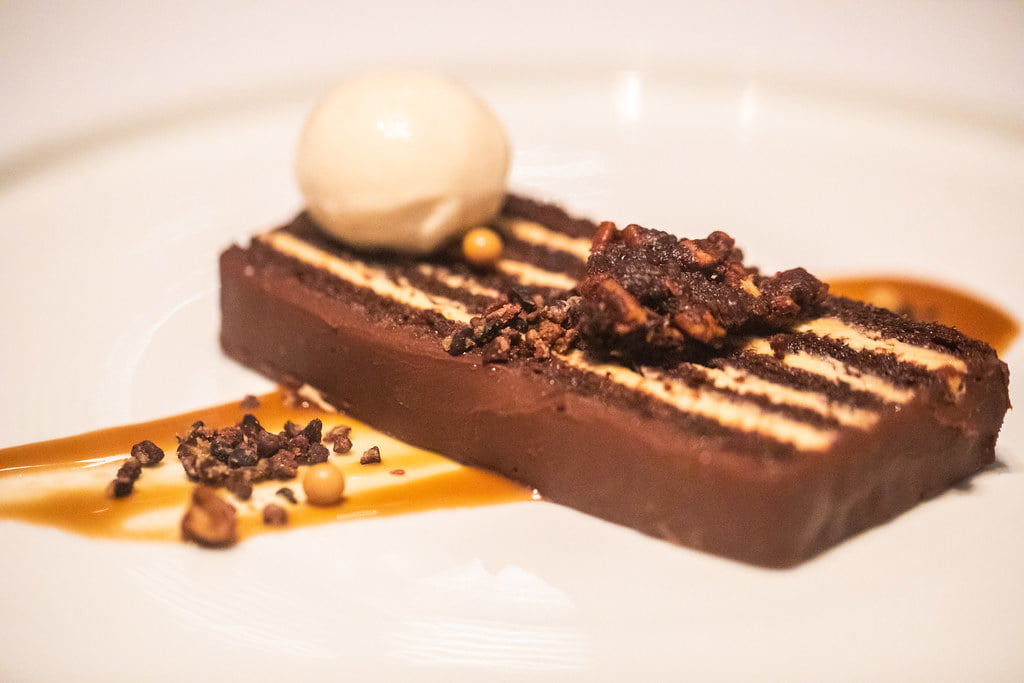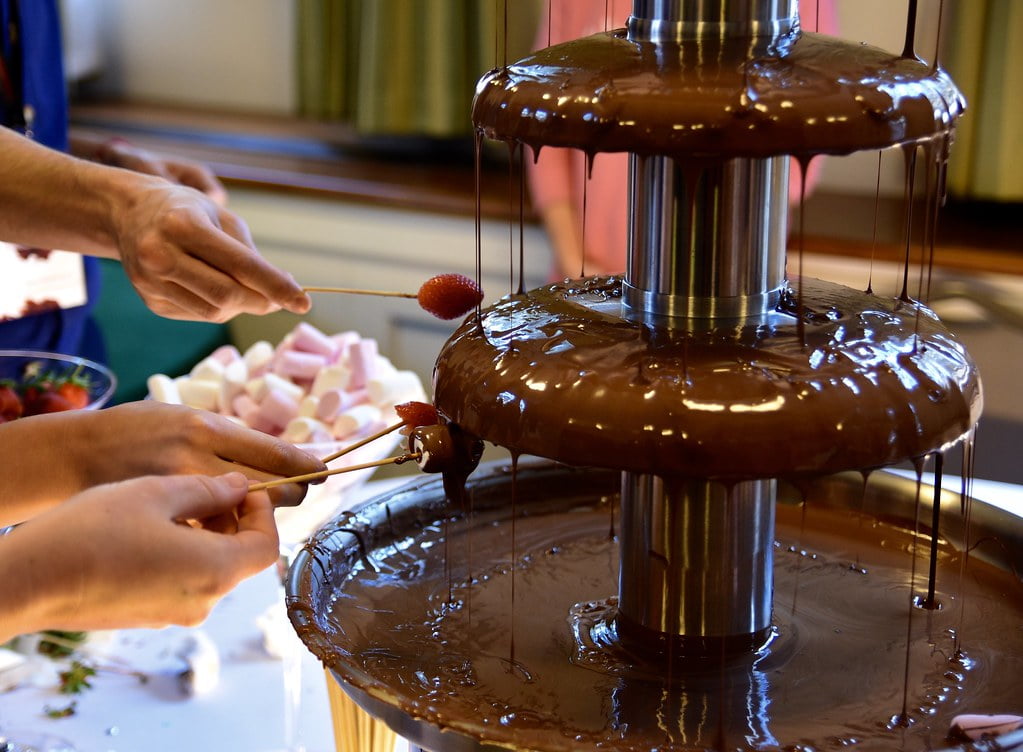This article delves into the history and evolution of chocolate of decadent sweets enjoyed since ancient times and their evolution into modern-day confectionary treats like chocolate bars and truffles. The origins of these delicious delicacies can be traced back to the Mayans and Aztecs, who used cocoa beans to create a unique ceremonial beverage. Over time, this beverage became famous worldwide, leading to the creation of various chocolate-based products.
As technology advanced, the production of chocolate became more complex and sophisticated, allowing for the creation of intricate designs and the use of multiple ingredients. Chocolate makers continue to push the boundaries of what is possible, creating new and innovative products that delight and tantalize our taste buds.
Despite its humble beginnings, chocolate has become an integral part of our culture and a beloved treat for people of all ages. This article explores the journey of chocolate from its inception to its modern-day production, showcasing the diversity and creativity that makes it such a beloved treat.
Origins History and Evolution of Chocolate
People in Mesoamerica have nurtured and treasured a unique product for over three millennia. The Mayan and Aztec civilizations were the first to uncover and cultivate the cocoa bean, which was used to create a tart, spicy chocolate beverage. This beverage was highly esteemed and mainly consumed by upper-class society. The cocoa beans even served as a form of tender for trading.
By the 16th century, the cocoa bean had spread to Spain and other parts of Europe. It was mixed with sugar and milk to generate a sweeter version of the chocolate-based beverage. This drink was trendy among the affluent in Europe and America, who could afford the costly ingredients. Chocolate was also used as a flavoring for desserts and other dishes, and the demand for chocolate treats increased.
In the 19th century, industrial production and advanced technologies enabled the mass production of chocolate delights, such as bars, truffles, and bonbons. Consequently, chocolate became an international favorite, and its appeal persists.

Early Chocolate Consumption
Since ancient times, the Mesoamericans have savored a unique caffeinated concoction. This zesty, frothy beverage, xocolatl was made with chili peppers, maize, water, and honey. It was highly regarded throughout the area as a refreshment, spiritual offering, and even a form of currency.
From the upper classes to the commoners, the popularity of this refreshing beverage grew. Both hot and cold, it was thought to possess special energy-boosting and fatigue-fighting properties and romantic qualities. Soon it was a beloved beverage across the region.

The Introduction of Chocolate to Europe
The alluring, captivating taste of what we know today as chocolate was foreign to Europe until the early 16th century. On their mission to meet with the Spanish King, Philip, and Dominican friars, they brought back with them this exciting treat. The remarkable beverage spread throughout Europe, becoming a favorite among the wealthy and respected. It was the Mayans who initially discovered and cultivated the cacao tree and who were credited with the discovery of this delightful delicacy. People believed chocolate had multiple health benefits, such as increasing life expectancy.
The years passed saw chocolate being used to create a variety of desserts, from cakes to truffles. In the 19th century, cocoa powder was introduced, enabling the growth of even more inventive treats, including hot chocolate and chocolate bars. To this day, this delectable delight continues to be a favorite in Europe, and its popularity is still on the rise globally.
The Rise of Chocolate Companies
During the later part of the 19th century and the early part of the 20th century, the popularity of sweet treats began to soar, giving birth to an abundance of family-run confectionary businesses. Cadbury, Mars, and Hershey were only a few companies that took advantage of the newfound demand, manufacturing a wide range of products to suit all palates.
These businesses improved efficiency by introducing innovative procedures and technologies to keep up with the ever-growing interest. This allowed them to produce more treats faster, making them more affordable and readily available. This created a thriving industry and an even greater demand for sweet treats.
The success of these businesses also opened the door for more creative confections. During the 1930s, Nestlé introduced the world to a new type of candy, white chocolate, and Joseph Fry discovered that adding a specific kind of fat to cocoa could form a solid mass. This revolutionized the industry; now, a wide range of sweet treats can be found, from smooth truffles to crunchy pralines.
The Invention of White Chocolate
In the 1930s, the Swiss company Nestlé sought to craft something unique. They created a sumptuous and extravagant treat- white chocolate through a combination of cocoa butter, sugar, milk solids, and vanilla. Its creamy texture, sweet taste, and luxurious appeal have made it a beloved indulgence ever since.
Cocoa butter, the main ingredient in white chocolate, is a concentrated form of the cacao bean. In contrast to traditional chocolate, it doesn’t feature cocoa solids, thus giving it a sweeter flavor. This has made it an ideal choice for various desserts, gifts, and baked goods.
White chocolate is frequently gifted during occasions like Christmas and Valentine’s Day. It can create decorative treats or add a creamy sweetness to cakes, cookies, and other pastries. Its versatility makes it a popular choice for any chocolate enthusiast.
The Introduction of Cocoa
In 1544, Dominican friars brought a delegation of Mayans to meet Philip, bringing a beverage of cultural heritage. This strong and bitter drink quickly won European acclaim and was adopted as a tasty, nourishing food. This led to a new curiosity about what could be done with the cocoa bean.
This sparked Joseph Fry to experiment and discover that adding cocoa butter to the powder created a solid product. This was the first real chocolate bar and began a new consumption and production period.
The introduction of cocoa to Europe changed how it was seen and ingested. It provided an opportunity to develop the cocoa industry, creating novel products, flavors, and recipes.
The Invention of the Solid Chocolate Bar
In 1847, Joseph Fry, a British chocolatier, made a momentous discovery that revolutionized how the world enjoyed something sweet. He discovered that adding cocoa butter to cocoa powder resulted in a solid mass. This invention allowed for mass production of solid sweets for the first time, and by 1868 Cadbury was offering boxes of treats with solid bars as the primary offering.
This breakthrough opened up a world of possibilities for candy makers. No longer limited to the classic bar, they could experiment with different ingredients and flavors, creating an array of delightful snacks. Filled with nuts, caramel, and other goodies, solid bars soon became a popular treat among all.
Fry’s invention had a lasting impact on the industry. It allowed for greater creativity in shapes and flavors and mass production, meaning that treats could now be produced in larger quantities and enjoyed by more people. This invention truly changed the way people savored something sweet.
Where Chocolate is Grown and Processed
The production of delicious treats made from the pod of the cacao plant is an intricate process that requires precise attention to detail. The beans are harvested, fermented, dried, roasted, and then ground into a paste referred to as chocolate liquor. Further refinement yields cocoa butter and cocoa powder; both are used to craft chocolaty delights. For the best quality, multiple beans from other regions are blended through a roasting, blending, and conching procedure, ultimately resulting in the delectable flavors associated with other brands.
To make these sweet creations, the tropical belt is the ideal location. The weather, soil, and harvesting techniques affect the product’s taste, texture, and overall quality. This labor-intensive process requires selecting the finest beans and the utmost care to ensure consumers receive the most delicious treats.
Conclusion
The progression of sweet treats is captivating and has moved forward drastically since it was initially discovered. From the ancient Mayan and Aztec civilizations to the launch of cacao in Europe to the widespread fabrication of goodies in the late 19th and early 20th centuries, this delightful treat has become a cherished part of numerous cultures worldwide. It is now relished in many forms, from bars and sweets to beverages and desserts. This delight will surely delight whether given as a gift or indulged in as a snack.
